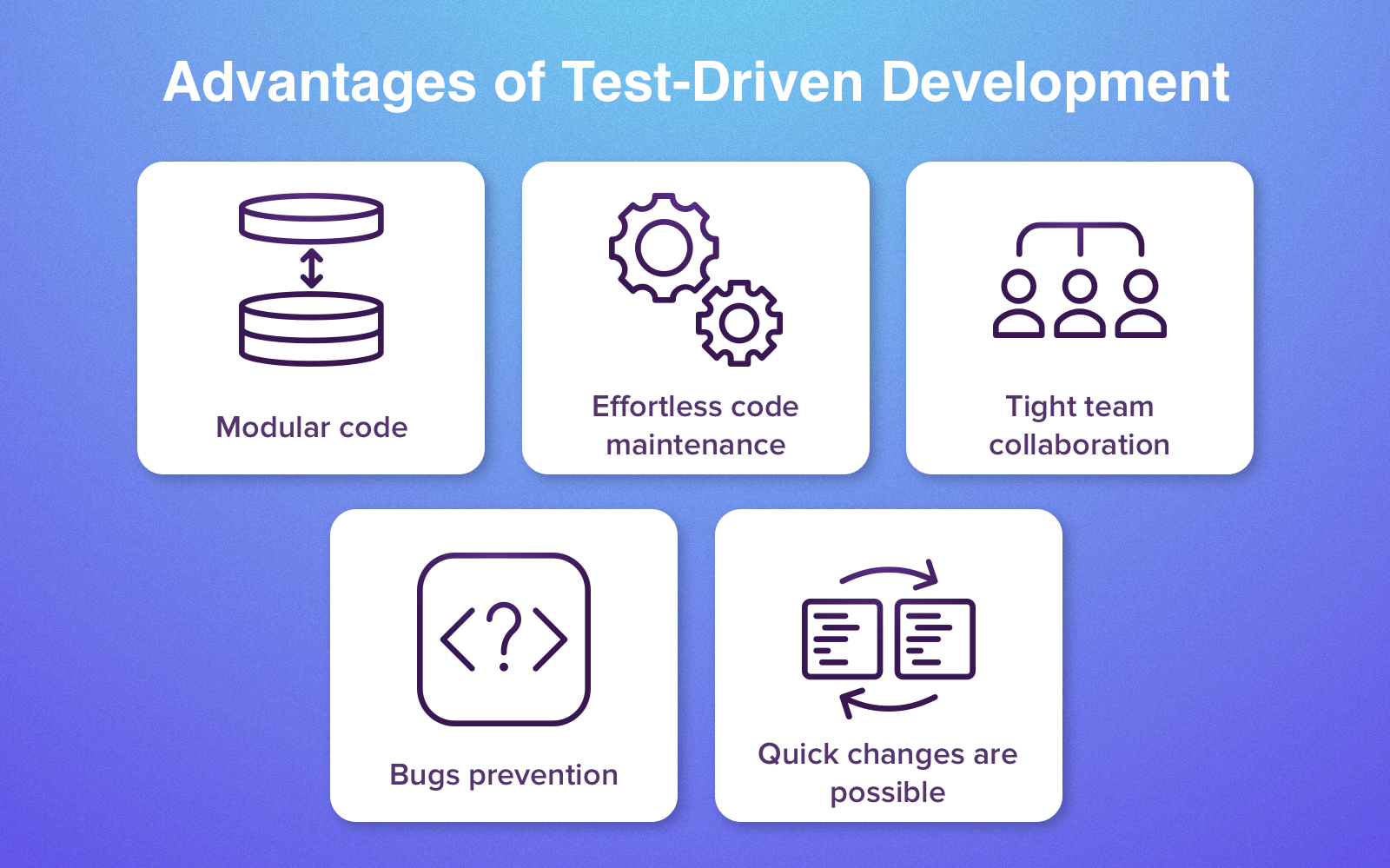The main goal of software developers is to create high-quality products with the required functionality. At the same time, this product creation shouldn’t cost a fortune. One of the effective methods used to speed up the process of creating software and reduce its cost is test-driven development, which offers a pool of benefits to both programmers and customers.
TDD or Test-Driven Development: What Is It?
Test-Driven Development is an approach to software or mobile app development that relies on cycling. Its mechanism of action is the following:
- a QA engineer writes a test that covers the desired change;
- developers write a code, which must pass this test;
- the code is refactored to the existing standards;
The benefit of the TDD approach is that both tests and code can be written by a single specialist. However, it’s recommended to engage two programmers or a programmer and a QA engineer.
Benefits of Test-Driven Development
Developers opt for the TDD approach for several reasons. Let’s single out the key benefits of this methodology.
- Creating modular code. When using the TDD approach, programmers have to write code in small blocks to test it properly. This helps create good software architecture and understand how to work with a modular structure better.
- Transparency and ease of refactoring. The modular code writing process is transparent and secure. Also, when the code is tested immediately after it was written, it is easier to refactor it when needed. When you test a large piece of code that has been written for months, it is more difficult to improve if any problems arise.
- Increased productivity of the developer team. Tests let us see the problems with the code immediately, and all the team members can work together at its improvement.
- Preventing bugs. The test-driven development lets detect bugs immediately and fix them before writing the next piece of code. Most bugs stand no chance.
- Increasing accuracy and specifying the requirements. The TTD approach lets clarify the requirements at every single stage once again.
As you see, the TDD methodology offers quite a lot of benefits. However, there is at least one more important thing we can’t but mention. Test-driven development helps reduce project costs.

How the TDD Cuts off the Costs
When you just start using test-driven development, it can seem you too time-consuming. Actually, when you have to test every small piece of code, fix all the bugs immediately, and then test it again until it is perfect, you lose much time. However, it’s important to understand that by doing so, you create a clean copy that needs no further corrections. This is why in the long-term perspective, you save much time (and money).
Another benefit here is the possibility of automatizing tests. After every single code modification, it will be tested automatically once again. This will help you make all the necessary improvements immediately and avoid the need for rewriting several hundred code lines in the end.
How to Implement the TDD: Four Main Steps
The effectiveness of any approach depends on how wisely you use it. When it comes to test-driven development, it is implemented in several steps. Here are the main of them.
- Prepare all the tests you will need in the process of developing. This is a crucial and very responsible step. For a starter, you may create the tests needed for software refactoring. It’s a good idea to visualize everything by writing down or drawing all the tests you will need on every stage. The more complicated and challenging the project is, the more detailed and accurate the test scheme should be.
- Clarify all the requirements. This task is closely connected with the previous one. To make a test scheme you need to understand clearly what particular result you need to get at each stage and how you are going to reach it. When every stage is clearly described, and proper tools are chosen for its implementation, the development process is fast and seamless.
- Divide the development process into implementation and testing. In fact, there can be more directions if the project is large and complicated but developing and testing are the two mandatory ones. It’s important not to mix them up.
- Think of the naming. In order not to get confused, you need to attribute proper and relevant naves to each text and implementation step. Try to name them by categories, classes, and subclasses and keep to a unified order. For example, if the implementation stage is called MyPageOne, then it’s a good idea to name the corresponding testing stage MyPageOne.test. The bug-fixing stage, in turn, will be called MyPageOne.fix.test, and so on.
The quality of the preparation work determines the efficiency of all future activities. So don’t be lazy to double-check every point before you begin coding and testing.
The Bottom Line: Why Choose the Test-Driven Development
The test-driven development approach has some weighty advantages if compared to conventional software development. It requires serious preparatory work; however, in the long run, it helps speed up the development process, minimize the number of mistakes and bugs, and reduce the overall project cost. Automated testing shows all the problems immediately and let us improve them early, without the need for rewriting large pieces of code afterward.
Vitaly Kuprenko is a technical writer at Cleveroad. It is a software development company located in Eastern Europe. His mission is to provide people with interesting material about innovations in the world of IT. You can read him via his twitter.




